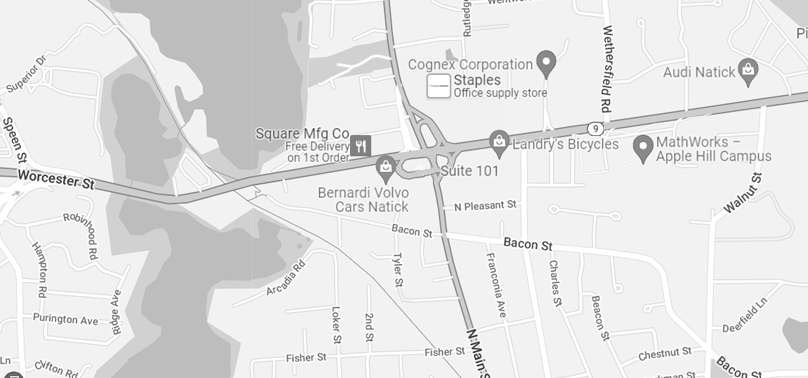February 21st, 2016
Each February the American Dental Association (ADA) sponsors National Children’s Dental Health Month to raise awareness about the importance of oral health.
Why is attention to children’s dental health important?
Tooth decay is the most common chronic disease in children, despite the fact that it’s almost entirely preventable. More that 40 percent of children ages 2 to 11 have had a cavity in their primary (baby) teeth, and more than two-thirds of 16 to 19-year-olds have had a cavity in their permanent teeth.
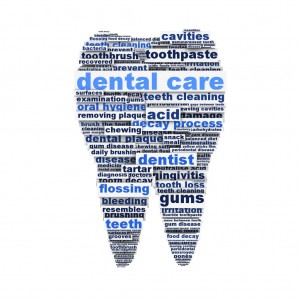
Developing good habits at an early age and scheduling regular dental visits helps children get a good start on a lifetime of healthy teeth and gums. Good oral hygiene practices such as thorough brushing with fluoride toothpaste can help keep children from getting cavities.
Make sure to brush two times a day for two minutes (that’s 4 times a day for those of you with braces), floss once a day and see your dentist every 6 months.
Lakewood Park Orthodontics is promoting children’s dental health
As an active member of the ADA, Dr. Hughes strongly supports this effort! She will be headed out to local Natick Schools this month to hand out toothbrushes, dental information and give fun classroom presentations on dental health.
February 8th, 2016
When you get your braces on our staff explains all of the ways you can help keep your mouth healthy and make your treatment move faster. We tell you to avoid hard and sticky foods that cause broken brackets and to floss every day. We also tell you to brush five times a day - after every snack or meal. However, there are some times when it is better to not brush after your meal or snack… Actually brushing your teeth after certain meals can hurt your enamel!
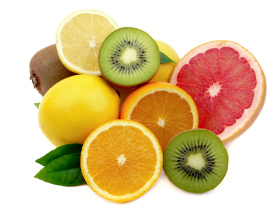
When you eat foods that are highly acidic like citrus fruits, soda and sugary foods it changes the PH balance in your mouth from alkaline to acidic. After eating highly acidic foods your teeth are susceptible to damage. When you brush your teeth in this weakened state you can damage the enamel because the bristles can wear away the surface.
Now, for all of you who hate brushing, don’t get too excited – you still have to brush five times a day. However, after eating highly acidic foods it’s best to wait an hour before brushing. Other preventative measures you can take after eating acidic foods include rinsing or drinking water and concluding your meal with milk, cheese or another non-acidic food. After you have given your mouth time to return to a healthy PH balance continue to brush as normal.
July 10th, 2014
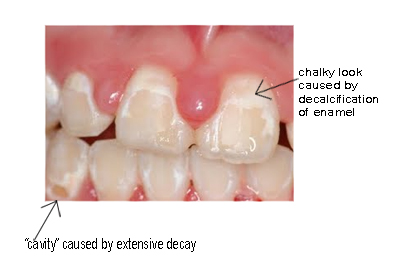
The day that braces come off is a day greatly anticipated by all orthodontic patients and orthodontists alike. It’s the day when both patient and doctor get to see the results of all of their hard work. Nothing can ruin this day quicker than discovering white spot lesions on the teeth.
White spot lesions, also called decalcifications and demineralizations, appear as white, chalky marks on the teeth. They are caused by dental plaque when acids created by the plaque remove minerals from the tooth surface changing the way the surface reflects light. The most common area for white spot lesions is between the gums and the brackets where brushing is most difficult. Many times white spots develop under swollen gum tissue making their detection difficult until after the braces are removed and swelling subsides. University studies have found that white spot lesions occur in 24% of adolescents who have never had braces. This number jumps to as high as 50% in teenagers with braces! Although braces DO NOT cause white spots on the teeth, they do complicate the removal of the plaque.
In order to prevent white spot lesions great oral hygiene is necessary, especially during orthodontic treatment. Removing plaque is the only sure way to prevent these stains. At Lakewood Park Orthodontics we begin oral hygiene coaching at the very first appointment. At the new patient consultation our treatment coordinator explains the importance of removing plaque and shows a video of how white spot lesions are formed. She describes which foods and drinks need to be avoided and encourages the use of a fluoridated toothpaste in order to harden the enamel surface. She also recommends using an electric toothbrush. By the end of the consultation both patients and parents know that white spot lesions are a possibility and how to prevent them.
When the braces are put on, our assistants go through proper brushing and flossing techniques with each patient. Patients are told to brush five times a day for two minutes and to floss once each day. During treatment, our assistants and Doctor Hughes reward good brushers with wooden nickels and give additional instruction to patients who are struggling. When they notice that oral hygiene needs to be improved they point it out to the patient and family immediately. Dr. Hughes has even removed braces early from some patients with severe problems.
If you have white spot lesion on your teeth when your braces come off, it’s reassuring to know that all white spots improve a little over time. 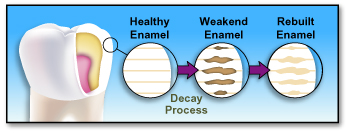 Experts advise AGAINST applying extra fluoride during the first six months as it may seal the surface of the lesion and prevent remineralization below the surface. After six months, low concentration over-the-counter fluoride rinses can be applied. Remineralization pastes (like MI Paste) can also be used to repair the tooth. Bleaching has been shown to lighten the enamel surrounding white spot lesions. White spots then blend in better and actually improve as the effects of the bleaching wear off. For more severe problems, your dentist may perform microabrasion (removing superficial white spots), cosmetic bonding (replacing damaged enamel), or place porcelain veneers (covering badly damaged surfaces).
Experts advise AGAINST applying extra fluoride during the first six months as it may seal the surface of the lesion and prevent remineralization below the surface. After six months, low concentration over-the-counter fluoride rinses can be applied. Remineralization pastes (like MI Paste) can also be used to repair the tooth. Bleaching has been shown to lighten the enamel surrounding white spot lesions. White spots then blend in better and actually improve as the effects of the bleaching wear off. For more severe problems, your dentist may perform microabrasion (removing superficial white spots), cosmetic bonding (replacing damaged enamel), or place porcelain veneers (covering badly damaged surfaces).
Since white spot lesions are caused by plaque the best prevention is keeping your teeth clean by practicing proper oral hygiene techniques. If you would like additional oral hygiene instruction ask Dr. Hughes or our assistants at your next appointment.
References:
Jorgensen Orthodontics http://www.gregjorgensen.com/blog/2013/08/do-orthodontic-braces-cause-white-spots-on-teeth/#sthash.rnKxgG5n.dpuf
Ora Media Dental Self-sufficiency http://mizar5.com/demin.htm
March 27th, 2014
Dr. Chavez, a colleague of Dr. Hughes, has developed an easy to remember formula to help orthodontic patients remember important information about maintaining good oral hygiene. He calls it the ‘Rule of 5’s’. Dr. Hughes would like to share this clever mnemonic (memory) device with her orthodontic patients.
The ‘Rule of 5’s’
1. There are 5 places to brush: (1) Where the teeth meet the gum lines, In toward the gums; (2) under the wire; (3) on top of the wire; (4) on top of the teeth; (5) in back of the teeth
2.There are 5 times during the day to brush: after breakfast, after lunch or after school, after dinner, after snacks and before bed.
3. Spend 5 minutes brushing each time.
4. At the end of the day, spend an additional 5 minutes to floss and use fluoride rinse.
August 16th, 2013
The habits your children develop now will follow them the rest of their lives. That's why it's so important to make sure they learn to brush and floss properly. Here are some tips for helping young children develop good dental hygiene habits.
Start Early
Dental care should begin as soon as the child's first tooth appears. Even though your child will be too young to understand the process, getting them used to the toothbrush and the sensation of brushing early will help build a lifetime of good oral health habits. The American Dental Association advises cleaning babies' teeth with water and a soft, child-size toothbrush from the time the first tooth appears up until two years of age. Between ages two and six, a pea-sized dollop of fluoride toothpaste can be used. Parents should always supervise their children while brushing, both to see that the job gets done and to ensure that they do not accidentally swallow the toothpaste.
Set a Good Example
As soon as your child can brush their teeth on their own, start brushing along with them. This will help them see that brushing is an important adult activity they should want to participate in. Plus, it will give you something productive to do while supervising their daily dental care routine.
Get Kid-Friendly Tools
In order to make dental hygiene more fun, you should consider investing in some of the many kid-friendly toothbrushes, toothpastes, and flossers. You should definitely use flossers instead of regular dental floss because they are easier for kids to handle. Kids' oral care items come branded with just about every cartoon character imaginable. Some toothbrushes spin, play music, or have moving parts that make them almost like a toy. You might consider having a stash of different brushes and letting your child choose which one to "play" with each time they brush.
Make It a Game
Tooth brushing is boring for adults, so it's no surprise that kids hate it too. One way to prevent your child from blowing through the brushing in two seconds flat is to turn it into a game. Try using a smartphone app like Brush DJ or Star Teeth, which challenges kids to brush along to a song or video for the recommended two minutes and helps the time pass faster.
Use Rewards
In order to make dental hygiene into more than just a chore, offer rewards for good technique and good behavior. For example, you might award points for each brushing session completed without complaining, or for each time your child remembers to floss without being reminded. When you child accumulates enough points, you can offer them a reward like a new toy or a special snack.
Ensure Dental Visits Are Positive
Children should have their first dental visit by the time they are 1 year old. In order to set the stage for many happy dental checkups down the road, be sure to select a non-threatening, kid-friendly dentist who can deliver a positive experience. You can also use various videos beforehand to help your child understand what to expect from their first visit to the dentist. If you need help finding a dentist for your child please call our office at 508 319 1545 and we would be happy to give a recommendation.
Article Source: http://EzineArticles.com/?expert=Dr_Jaime_Breziner




